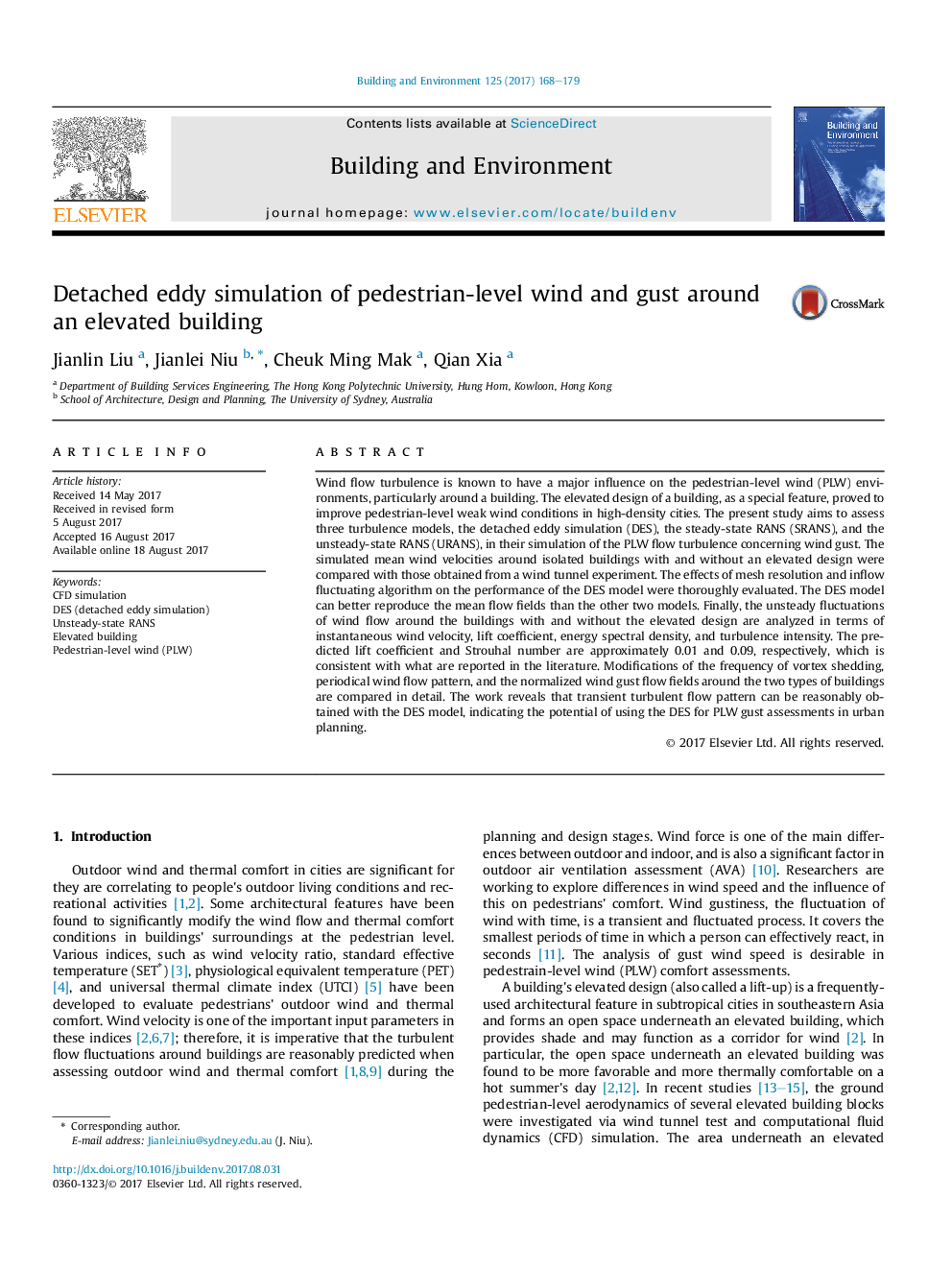| کد مقاله | کد نشریه | سال انتشار | مقاله انگلیسی | نسخه تمام متن |
|---|---|---|---|---|
| 6479221 | 1428367 | 2017 | 12 صفحه PDF | دانلود رایگان |
- Performances of SRANS, URANS and DES models of airflow around a building with and without elevation are analyzed.
- Mesh resolution and inflow fluctuation influencing DES modeling of flow around a building are analyzed.
- Performance of URANS is not better than that of SRANS in mean flow but it requires lengthy time-costs.
- Vortex method generates more perturbations than spectral synthesizer algorithm.
- Periodical flow characteristics around an elevated building is reasonably obtained by DES.
Wind flow turbulence is known to have a major influence on the pedestrian-level wind (PLW) environments, particularly around a building. The elevated design of a building, as a special feature, proved to improve pedestrian-level weak wind conditions in high-density cities. The present study aims to assess three turbulence models, the detached eddy simulation (DES), the steady-state RANS (SRANS), and the unsteady-state RANS (URANS), in their simulation of the PLW flow turbulence concerning wind gust. The simulated mean wind velocities around isolated buildings with and without an elevated design were compared with those obtained from a wind tunnel experiment. The effects of mesh resolution and inflow fluctuating algorithm on the performance of the DES model were thoroughly evaluated. The DES model can better reproduce the mean flow fields than the other two models. Finally, the unsteady fluctuations of wind flow around the buildings with and without the elevated design are analyzed in terms of instantaneous wind velocity, lift coefficient, energy spectral density, and turbulence intensity. The predicted lift coefficient and Strouhal number are approximately 0.01 and 0.09, respectively, which is consistent with what are reported in the literature. Modifications of the frequency of vortex shedding, periodical wind flow pattern, and the normalized wind gust flow fields around the two types of buildings are compared in detail. The work reveals that transient turbulent flow pattern can be reasonably obtained with the DES model, indicating the potential of using the DES for PLW gust assessments in urban planning.
Journal: Building and Environment - Volume 125, 15 November 2017, Pages 168-179
